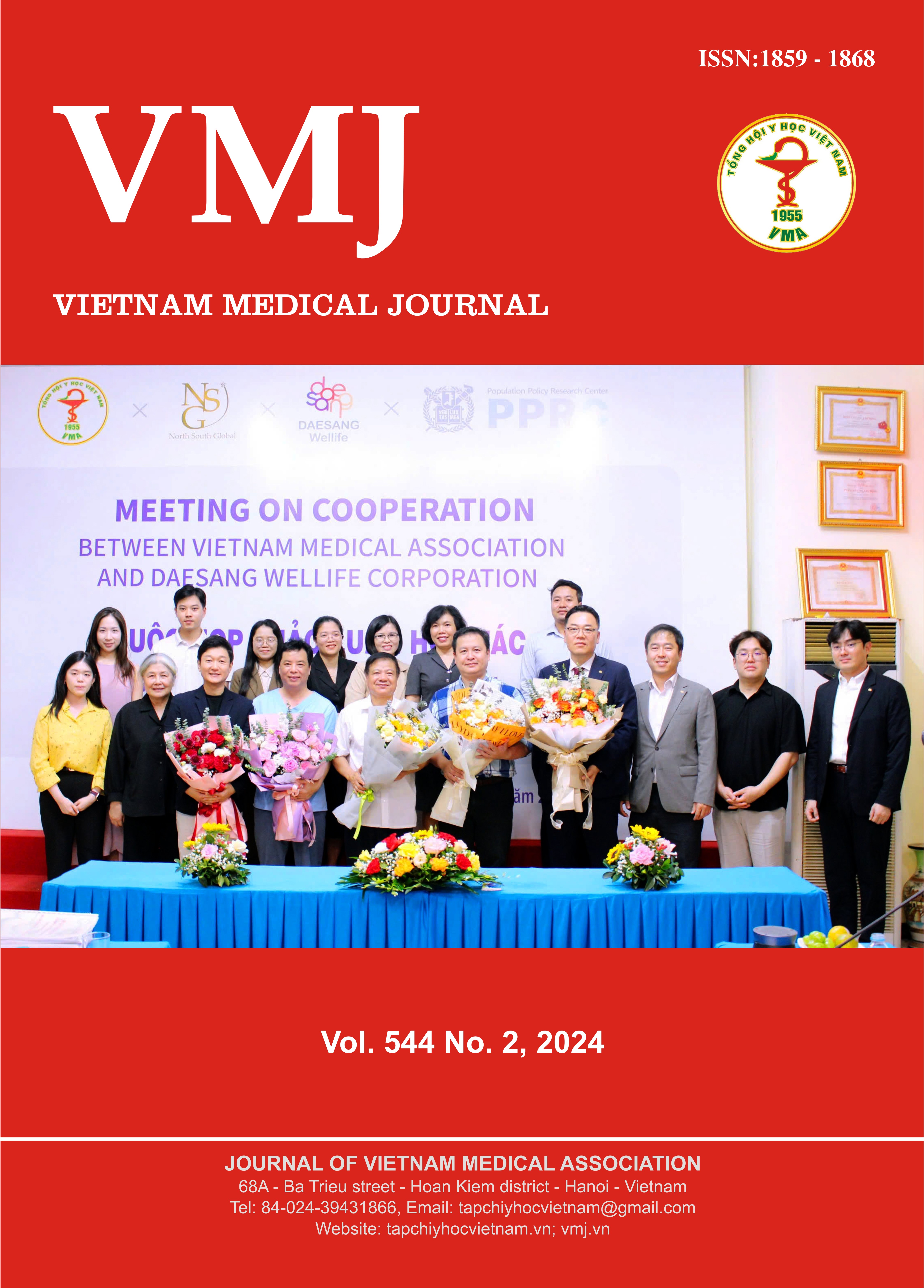THE KNOWLEDGE OF NURSES BEFORE AND AFTER TRAINING ON WOUND CARE WITH NEGATIVE PRESSURE THERAPY IN VIETNAM
Nội dung chính của bài viết
Tóm tắt
Background: Vacuum Assisted Closure (VAC) therapy is increasingly utilized in hospitals, including those in Vietnam. Adequate nurse knowledge and proficiency in wound care, particularly VAC-treated wounds, are vital for patient care. Objectives: This study aims to evaluate nurses' knowledge before and after VAC training at our institution. Materials and Methods: A comparative analysis was conducted on 238 nurses from 13 clinical departments at our institution. Nurses' knowledge was assessed before and after a training course. Pre-training and post-training assessments were performed immediately after the course and again 2 months later. Results: Prior to training, nurses had a mean knowledge score of 10.18 ± 2.31, which significantly increased to 28.86 ± 8.41 after the training program (p<0.001). Most nurses lacked sufficient knowledge of VAC therapy initially, but a substantial improvement was observed post-training. Conclusion: Nurses' understanding of VAC therapy improved markedly following training, emphasizing the importance of continuous education to ensure patient safety and enhance care quality. Ongoing training programs are essential to equip nurses with updated knowledge for efficient and safe patient care.
Chi tiết bài viết
Từ khóa
Nurse knowledge; VAC therapy; Wound care; Training assessment
Tài liệu tham khảo
2. Guo, S., & DiPietro, L. A. (2010). Factors Affecting Wound Healing. Journal of Dental Research, 89(3), 219–229. https://doi.org/10.1177/0022034509359125
3. Wilkinson, H. N., & Hardman, M. J. (2020). Wound healing: Cellular mechanisms and pathological outcomes. Open Biology, 10(9), 200223. https://doi.org/10.1098/rsob.200223.
4. Baharestani, M. M., & Gabriel, A. (2011). Use of negative pressure wound therapy in the management of infected abdominal wounds containing mesh: An analysis of outcomes. International Wound Journal, 8(2), 118–125. https://doi.org/10.1111/j.1742-481X.2010.00756.x
5. Mohamed, E., Elmoniem, A. E., Zaki, H. M., & Shebl, A. M. (2019). Effect of Training Program on Performance of Nurses Caring for Patient with Negative Pressure Wound Therapy. Journal of Nursing and Health Science, 8(1), 5. https://doi.org/10.9790/1959-0801033135
6. Yadav, S., Rawal, G., & Baxi, M. (2017). Vacuum assisted closure technique: A short review. The Pan African Medical Journal, 28. https://doi.org/10.11604/pamj.2017.28.246.9606
7. Lim, K., Lim, X., Hong, Q., Yong, E., Chandrasekar, S., Tan, G. W. L., & Lo, Z. J. (2020). Use of home negative pressure wound therapy in peripheral artery disease and diabetic limb salvage. International Wound Journal, 17(3), 531–539. https://doi.org/10.1111/iwj.13307
8. Mohamed, E., Elmoniem, A. E., Zaki, H. M., & Shebl, A. M. (2019). Effect of Training Program on Performance of Nurses Caring for Patient with Negative Pressure Wound Therapy. Journal of Nursing and Health Science, 8(1), 5. https://doi.org/10.9790/1959-0801033135
9. Dung, P. T., Chinh, N. D., Hanh, B. M., & Notter, J. (2016). Evaluating a training programme at Viet Duc University Hospital in Vietnam. British Journal of Nursing, 25(12), S14–S21.
10. Zarchi, K., Latif, S., Haugaard, V., Hjalager, I., & Jemec, G. (2014). Significant Differences in Nurses’ Knowledge of Basic Wound Management – Implications for Treatment. Acta Dermato Venereologica, 94(4), 403–407. https://doi.org/10.2340/00015555-1770
11. Elgamil, A. E., & Elhadi, M. M. (2017). Assessment of Nurses’ Knowledge and Practices Regarding Wound Vacuum Assisted Closure Therapy. 6(5), 6. https://doi.org/10.9790/1959-0605062732


